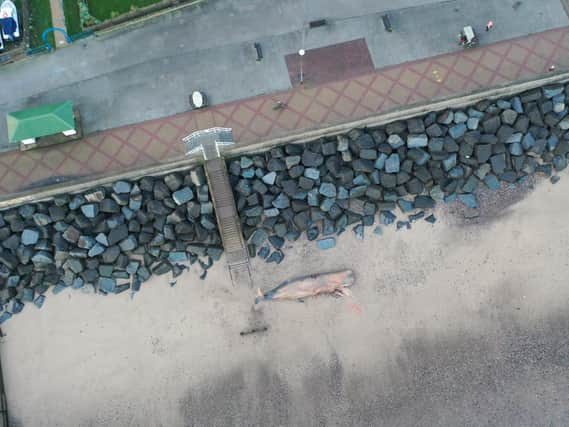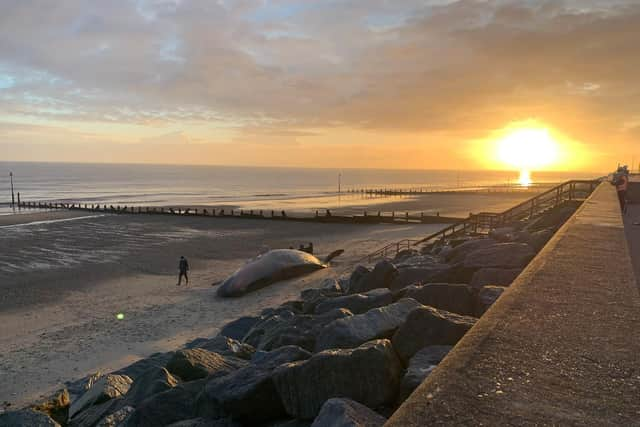Custom-made sled to be used to haul away rotting 20-tonne carcass of Withernsea whale


East Riding Council 's contractor has been on the beach removing planking from between the groynes, used to keep the sand in place, and getting a custom-made stainless steel sled delivered.
It is hoped the whale can then be hauled off the beach and taken away for incineration.
Advertisement
Hide AdAdvertisement
Hide AdLocal councillor Dave Tucker said: "You wouldn't believe the amount of work involved. They put £750,000 to keep the groynes on the beach last year or the year before which keeps the sand in place and of course the whale got trapped between the groynes.


"They had to take the groynes apart to get the bigger on the beach.
"It's an absolute logistical nightmare. They had a stainless steel sled made to pull the 20-tonne whale - that won't be cheap."
It comes as experts confirm that a seven-strong "bachelor pod" were stranded, not ten as originally thought.
Advertisement
Hide AdAdvertisement
Hide AdBut Rob Deaville, from the Cetacean Strandings Investigation Programme, based at the Institute of Zoology in London, said it was the biggest mass stranding he had ever investigated.
Historically the shallow North Sea has often proved a graveyard for the creatures which normally are found off the Continental shelf where they can dive 700m deep to find squid.
Their bio sonar - they send out clicks to navigate to find their prey - gets confused, and once in shallow water where they encounter obstacles like the massive Dogger Bank, history has shown there's "often sadly only one outcome".
The creatures were already decomposing by the time they started work so they were severely limited in what they could do.
Advertisement
Hide AdAdvertisement
Hide AdBut they took samples from five of the whales including skin which can be used for genetic research to determine whether they were related to each other, but also to get a handle on the size of the population.
"Whether they are increasing or decreasing, anything that sheds light on that is invaluable", he said.
What caused them to strand is "impossible" to say, with "lots of potential causes" including noise. "We just didn't have enough evidence of one or another," he said.
"Lots of our noise is being introduced into the environment and certainly that's a possible factor. Animals may move away from noise as opposed to towards it."
Advertisement
Hide AdAdvertisement
Hide AdIn the stomachs of two of the five they found no evidence of plastic ingestion - which has increasingly become a concern - and numerous squid beaks - their prey food, which they dive deep to hunt. Mr Deaville said: "My interpretation was that they were in reasonable condition, they weren't starved."
They removed teeth for ageing purposes and are talking to the Deep aquarium in Hull about donating some to the centre in recognition of the unusal event.
Paul Tripp, head of streetscene services at East Riding Council, said: “Work to remove the deceased whale on the beach near Withernsea’s South Promenade has started, with the aim of removing the animal by the end of the week.
“The council’s contractor has been on site to take out a number of wooden boards that make up part of three sea groynes on the beach to allow access for heavy machinery.
Advertisement
Hide AdAdvertisement
Hide Ad“The council has also commissioned its contractor to manufacture a sledge that will be used to move the animal, estimated to be 20 tonnes, and for it to then be taken away for specialist disposal.
“The council would like to thank residents for their patience and understanding while the logistical arrangements for this challenging operation were finalised.
“We would again advise members of the public to avoid the area and to be respectful of the animal while the work to remove it is undertaken.”
Comment Guidelines
National World encourages reader discussion on our stories. User feedback, insights and back-and-forth exchanges add a rich layer of context to reporting. Please review our Community Guidelines before commenting.